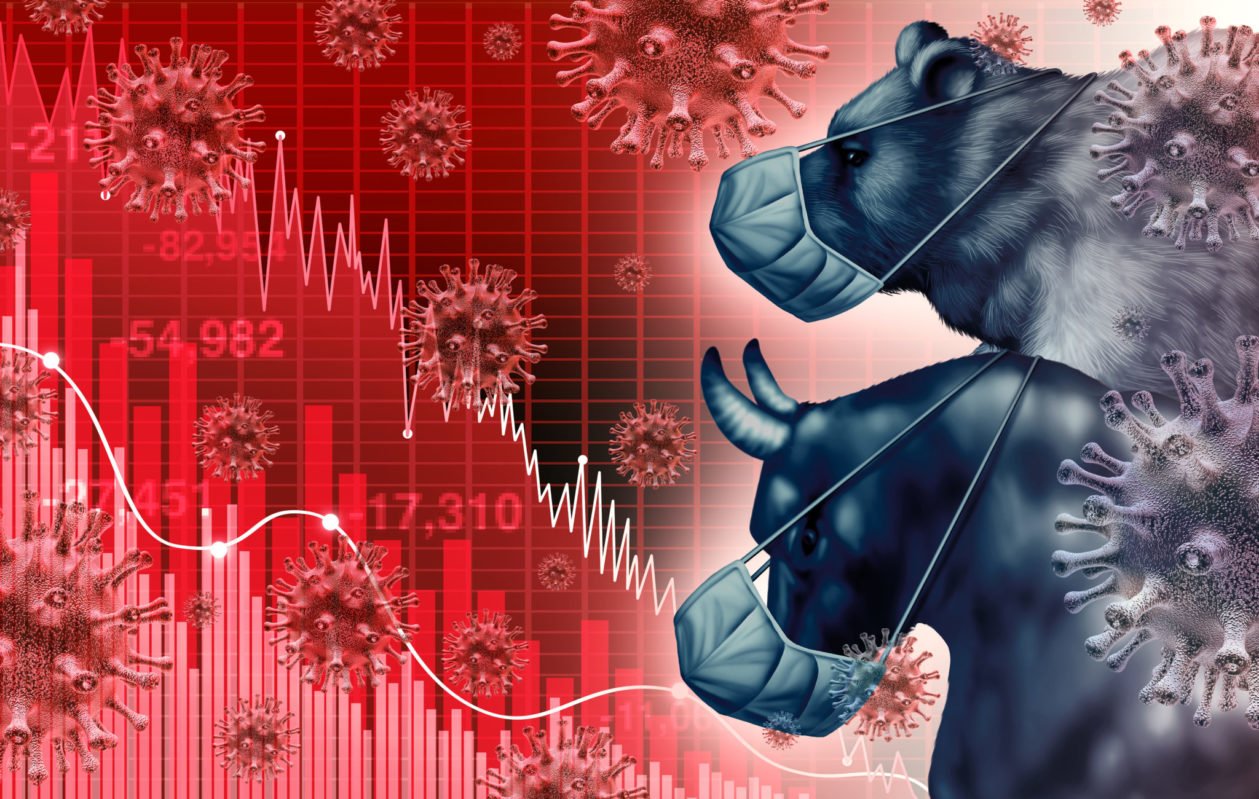When we think about big economic downturns, we often talk about them in terms of singular events, like the dotcom bubble, 9/11, the mortgage crisis of 2008. But every bear market equates to the following: a disruption in the chain of supply and/or demand. The COVID-19 pandemic is no different.
After 9/11, factories, businesses and services remained open and operating all over the world. The problem was that there wasn’t any demand—consumers were afraid to go outside. They stayed cooped up at home, reluctant to go and do the things that keep an economy buzzing. At its low point, the S&P cratered 44 percent, with NASDAQ down 78 percent.

Seven years later, the case was exactly the opposite. We all know the story: The big banks were reckless with their own money and their investors’ money, causing paralysis from a lack of supply. The lending world was frozen—and without a supply of funds, businesses began to fail. On March 9, 2009, the market bottomed out, down 53 percent from its peak.
The COVID-19 pandemic is a combination of both supply and demand shock. Like 9/11, Americans can’t go outside for fear of contracting a highly contagious disease with no cure, which medical professionals predict could kill as many as 2.2 million Americans. If those dire predictions materialize, it would be the equivalent of a terrorist attack every week, with no end in sight. Of course, even if we wanted to go about our normal lives, we couldn’t. All over the country, restaurants and movie theaters are shut down. Cruise ships are docked; Disney World is closed.
How do we get from this world to one in which people get on planes, go out to dinner, to dentist appointments and to Disney World? We need a bridge from one strong economy to the next.
As soon as investors see some sign of progress, the markets will change. We don’t need to have a cure or vaccine, just some signal that the spread is under control and that we’re “flattening the curve.” What we have now is really two crises—one health care, one financial. Once we have the health care aspect under control, the markets will rebound. If the health care crisis ends in four to eight weeks, the recovery will look like a V shape, where everything goes down and then quickly goes back up once people are back to work. If it takes three to four months, it will look more like a U shape; and if it ends up being a worst-case scenario, we’re looking at an L-shaped recovery.

Absent a crystal ball, there are steps investors can take to safeguard their financial well-being. First, every investor should have a plan. If you’re in retirement or nearing it, most of your money should already be in bonds and alternative investments, which are uncorrelated to the stock market. We know that, on average, there will be a financial downturn every five years. We buy bonds precisely to get us through times like these. For younger investors, they should buy, buy, buy! Anyone with more than 10 years to retirement can consider this a major sale. Don’t miss it.
Throughout every bear market, brilliant investors didn’t run away, they rebalanced into the weakness instead of cashing out or waiting a year or more until the markets recovered and stocks returned to their true value. Remember, every correction and bear market in history has made a full recovery. Timing the markets doesn’t work. They also took advantage of tax-loss trading, where, if a position drops, they sell and replace it with a similar position for an after-tax gain. These investors generally recover faster than the market and are far better off after accounting for tax savings.
Time and again, I’ve seen investors make three mistakes. One, as previously mentioned, they take themselves out of the market by going to cash and completely missing out on the recovery. Two, they take company-specific risks, putting all their eggs in a handful of companies, which leaves them vulnerable to an event along the lines of an Enron or Worldcom. Third, they’re overly invested in one industry, whether technology, real estate or, as we’re seeing now, hospitality industries like restaurants, hotels and airlines. No one thinks the worst can happen; but it can. Companies and industries can go to zero. Remember Freddie and Fannie? A well-balanced portfolio, composed of securities from the top 100 or 500 companies, is the best way to guard against financial ruin.
At some point, supply and demand will reconvene. People will return to work, and we’ll have crossed that bridge to the other side of a strong economy. Before that happens, smart investors should look at this financial situation as an opportunity to take their portfolio to new heights. We’ve seen it before, and we’ll see it again. Patience and discipline will win out.
Peter Mallouk is chief executive officer of Creative Planning, one of the largest independent firms in the country. With $47 billion in assets under management, Creative Planning has clients in all 50 states and overseas.







